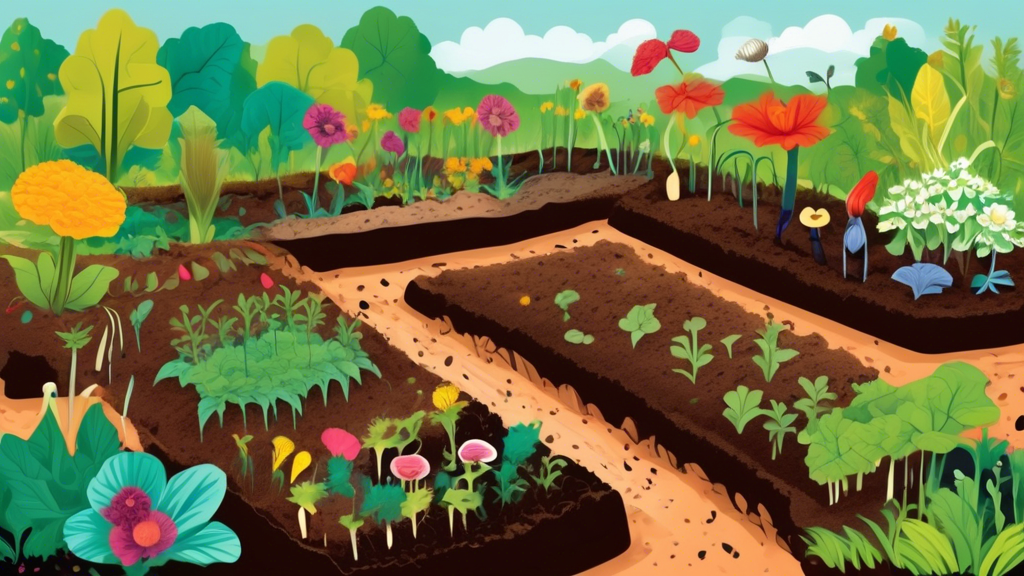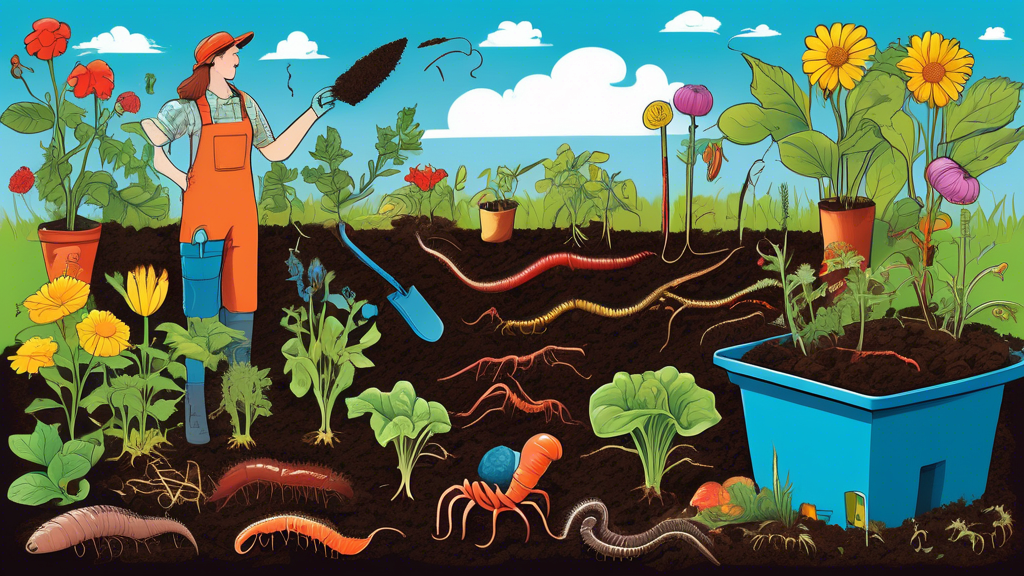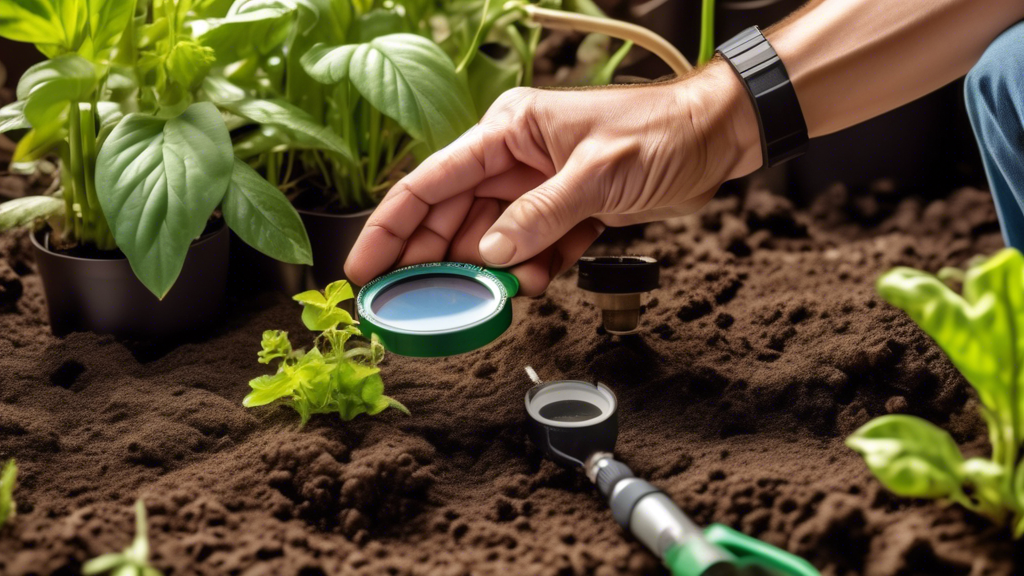
Introduction: Why a Seasonal Approach to Pest Control is Essential
Pests aren’t a constant, year-round problem; they operate on a seasonal schedule dictated by their life cycles. Trying to fight them with the same tactics in every season is an uphill battle. The core philosophy of effective pest management is that prevention is always more effective, easier, and safer than eradication. This guide is designed to provide you with a proactive, timed strategy to protect your garden throughout the entire year.
The Gardener’s Common Frustrations
Understanding what you’re up against is the first step to winning the battle. Each season brings its own unique set of challenges that can test the patience of any gardener.
Spring’s Surging Populations
Just as your tender new plants are pushing through the soil, pests like aphids, slugs, and cabbage worms emerge with voracious appetites, threatening your garden at its most vulnerable stage.
Summer’s Relentless Assault
The peak growing season is also the peak pest season. Japanese beetles can skeletonize leaves overnight, while squash bugs and spider mites thrive in the heat, stressing plants and reducing yields.
Fall’s Hidden Invaders
As the garden winds down, pests are looking for a place to overwinter. Borers, scale insects, and others seek shelter in your plant debris and soil, ready to emerge with a vengeance next spring.
Winter’s Silent Scourge
When you think the pest battle is over, rodents like voles and mice become the primary threat. Under the snow, they gnaw on the bark and roots of dormant trees and shrubs, often causing fatal damage.
Your Season-by-Season Pest Management Action Plan
Spring Pest Management: Awakening and Prevention
Spring is about setting a strong, pest-resistant foundation for the rest of the year.
- Key Tasks: Thoroughly clean up winter debris to remove pest hiding spots, till the soil to expose grubs to predators, and apply horticultural oil on fruit trees before buds open.
- Target Pests: Aphids, Slugs, Cutworms.
- Pro Tip: Use floating row covers to create a physical barrier against early pests. This non-chemical method is incredibly effective for protecting seedlings.
Summer Pest Management: Vigilance and Control
Summer requires constant vigilance to keep pest populations from exploding.
- Key Tasks: Scout your garden daily, checking the undersides of leaves for eggs. Maintain consistent watering to avoid drought stress, which attracts pests, and ensure good air circulation by proper spacing.
- Target Pests: Japanese Beetles, Squash Vine Borers, Tomato Hornworms.
- Pro Tip: Hand-pick Japanese beetles early in the morning when they are sluggish and lethargic. Simply knock them into a bucket of soapy water.
Fall Pest Management: Cleanup and Denial
Fall is the most critical season for preventing next year’s pest problems.
- Key Tasks: Remove all spent plants, fallen fruit, and vegetables. Destroy (don’t compost) diseased material. Till the soil and consider planting a cover crop.
- Target Pests: Overwintering insects, Squash Bugs.
- Pro Tip: Practice “sanctuary zoning.” Leave a small, designated corner of your yard “messy” with stems and leaves to provide winter habitat for beneficial insects, while keeping your main garden beds meticulously clean to deny shelter to pests.
Winter Pest Management: Planning and Protection
Use the quiet winter months to protect your garden and plan for a better season ahead.
- Key Tasks: Apply a layer of mulch *after* the ground freezes to deter rodents from nesting near your plants. Clean, sharpen, and oil your tools. Plan your garden layout for next year, incorporating crop rotation.
- Target Pests: Voles, Mice, Scale Insects.
- Pro Tip: Protect young trees from rodent damage by installing cylindrical wire mesh cages around the base. Bury the bottom a few inches below the soil line to prevent burrowing.
Chemical vs. Organic: Choosing Your Pest Management Strategy
Every gardener must choose the tools for their pest control toolkit. Here’s a breakdown of the two main approaches.
The Organic Arsenal
This strategy focuses on working with nature to manage pest populations.
- Methods: Companion planting (e.g., basil with tomatoes), introducing beneficial insects (ladybugs, lacewings), using neem oil, insecticidal soaps, and diatomaceous earth.
- Best For: Prevention, light to moderate infestations, and especially edible gardens where chemical residue is a concern.
The Chemical Arsenal
These are potent, synthetic solutions for when other methods are not enough.
- Methods: Broad-spectrum and systemic pesticides.
- Best For: Severe, widespread infestations that threaten to destroy a crop and where organic methods have proven ineffective.
| Method | Speed of Action | Specificity | Environmental Impact | Relative Cost |
|---|---|---|---|---|
| Organic | Slower | Often Higher (targets specific pests) | Low | Low to Medium |
| Chemical | Faster | Often Lower (can harm beneficial insects) | High | Medium to High |
Beyond the Basics: Unique Strategies for a Resilient Garden
Mastering the fundamentals is key, but employing advanced tactics can give your garden a significant edge.
Leverage “Trap Cropping”
A powerful and often overlooked organic strategy is trap cropping. This involves planting a sacrificial crop that is *more* attractive to a specific pest than your main valuable crops. The pests will naturally congregate on the trap crop, which you can then monitor, treat, or even remove entirely, leaving your primary plants largely untouched.
Practical Example: Plant a border of Nasturtiums around your vegetable patch. Aphids are highly attracted to Nasturtiums and will often flock to them, ignoring your nearby tomatoes and beans. You can then spray or remove the infested Nasturtiums with minimal impact on your garden’s ecosystem.
Frequently Asked Questions (FAQs) About Seasonal Pest Control
What is the single most important thing I can do to prevent pests?
Focus on building healthy, living soil. Healthy soil produces strong, vigorous plants that are naturally more resistant to pest infestations and disease. A stressed plant is a magnet for trouble.
I see bugs in my garden. Should I spray them all?
Absolutely not! Always identify the insect first. Your garden is full of allies. Insects like ground beetles, soldier beetles, and praying mantises are voracious predators that consume the pests you’re trying to control. Spraying indiscriminately will harm these beneficial insects and make your pest problem worse in the long run.
When is the best time to apply dormant oil?
The ideal window is in late winter or very early spring. Apply when temperatures are consistently above 40°F (4°C) for at least 24 hours, but before the tree or shrub’s buds begin to swell and open. This timing ensures the oil effectively smothers overwintering pest eggs without damaging the new, tender plant growth.
Can I use homemade sprays, like soap and water, on all my plants?
Use them with caution. Even natural sprays can cause phytotoxicity (plant damage). Always test any spray—homemade or commercial—on a small, inconspicuous part of the plant and wait 24-48 hours to check for adverse reactions like leaf scorching or yellowing. Some plants, like certain varieties of peas, portulaca, and sweet peas, are particularly sensitive.
Conclusion: A Year-Round Commitment to a Healthy Garden
A thriving, productive garden is the result of consistent, proactive care, not sporadic reactions to crises. By adopting the structured, seasonal approach outlined in this guide, you move from being a passive victim of pests to an active steward of your garden’s ecosystem. This commitment to year-round management is the key to building a resilient and beautiful garden that can withstand the pressures of each passing season.






